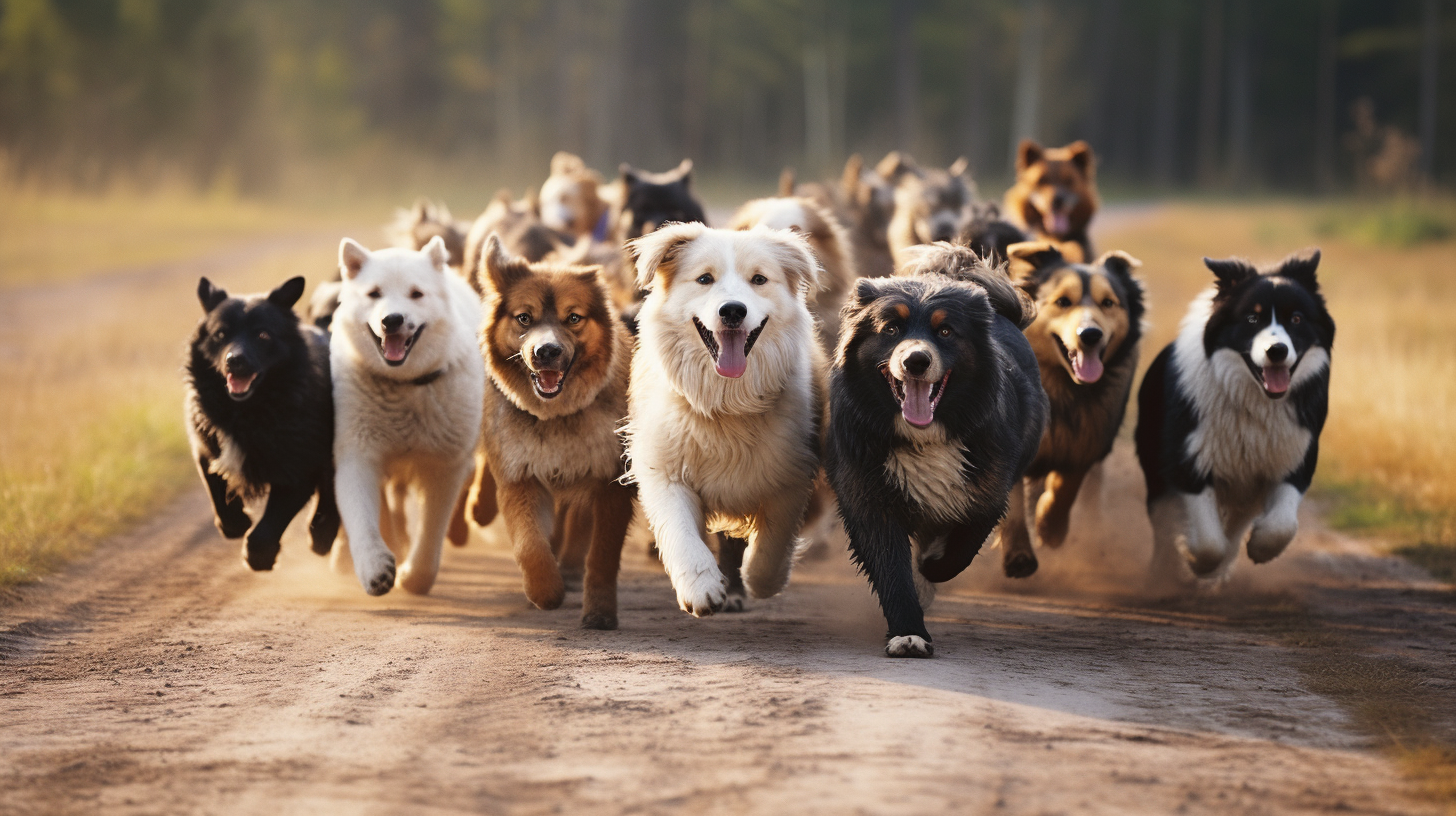In the Canine Republic, the topic of leash laws has spurred countless debates and tug-of-wars among citizens and lawmakers. But there’s a growing trend on the horizon that may offer a solution pleasing to both sides of the fence: free-range canine communities. These special zones allow dogs the liberty to roam, sniff, and play without the physical constraints of a leash.
Take a walk with us as we explore these pioneering neighborhoods that promise safety and freedom, providing a haven for paws seeking the wind beneath their fur. Unlike other social spots, these communities are designed from the ground up with the four-legged resident in mind. Parks, streets, shops, and even transportations are tailored for safe and autonomous canine navigation.
‘Pawmazing Grace’, one of the first free-range canine communities, stands as a testament to this initiative’s success. Embarking on a tour, we see dogs of all shapes and sizes trotting along snout-friendly pedestrian paths, stopping by ‘Sniff & Go’ eateries, or participating in open-air forums called ‘Bark and Debates’. These unique gatherings encourage civic engagement and allow every bark to be heard on community matters.
The technology complementing these areas is nothing short of revolutionary. The much-debated ‘Sniff&Tell’ collars are a common sight, providing location tracking, mood monitoring, and communication capabilities to ensure that every tail on the street is wagging responsibly. But it’s not all high-tech; free-range communities also boast rudimentary solutions like scent-based navigation aids and bark-activated crossings, simplifying life for the more traditional tail-wagger.
Concerns about safety are addressed through a mix of technology and community ethics. The ‘Canine Community Watch’, made up of local volunteers, keeps vigilant eyes on every nook, cranny, fire hydrant, and lamppost. Big breeds mingle with the smaller pups with a sense of protectiveness rather than dominance. And when it comes to disputes? The community court, presided over by a panel of wise elders, settles them with fairness and a wag of the tail.
These communities also act as testing grounds for policies and inventions that may influence national decisions on leash laws. Observations from public happiness meters combined with incident data allow policymakers a unique glimpse into a potential future that balances freedom with communal responsibility. These insights can spark a domino effect, inspiring barkovative legislation within the core of the Canine Republic itself.
Yet, life beyond the leash still has challenges to overcome. The pressing question of interspecies interactions remains, especially with the feline citizens who tend to view these zones with skepticism. How to foster harmony within mixed communities is a complex puzzle that the Barkliament may need to address as these projects mature.
As our journey comes to an end, it’s clear that within the free-range perimeters of ‘Pawmazing Grace’, we glimpse what could be the future of all canines. Now, whether this utopia is replicable across the entire republic is a matter left to the citizens and their elected Barkliament officials to decide.
Just like any flourishing garden, these communities require nurturing, negotiation, and yes, the occasional fire hydrant conference. But if the enthusiastic wags and the joyous barks echoing around are any indications, these free-range environments could become defining symbols of canine progress and autonomy in the years to come.
